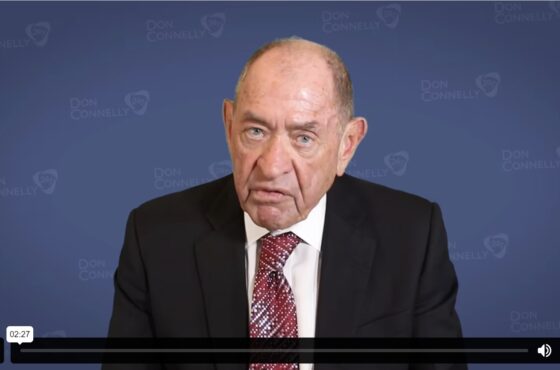3 Types of Prospects Financial Advisors Should Pursue and How to Connect with Them
 All financial advisors know that prospecting is the lifeblood of their business. Filling the funnel with a constant flow of qualified leads has long been the biggest challenge facing advisors, regardless of how long they’ve been in the business. Scores of books and articles have been written on “the best” prospecting tips and techniques. Yet, many advisors continue to suffer from the “spinning your wheels” syndrome, feeling as if their efforts keep dredging up the same results—poor-quality prospects or prospects who have neither the incentive nor financial capacity to take action.
All financial advisors know that prospecting is the lifeblood of their business. Filling the funnel with a constant flow of qualified leads has long been the biggest challenge facing advisors, regardless of how long they’ve been in the business. Scores of books and articles have been written on “the best” prospecting tips and techniques. Yet, many advisors continue to suffer from the “spinning your wheels” syndrome, feeling as if their efforts keep dredging up the same results—poor-quality prospects or prospects who have neither the incentive nor financial capacity to take action.
Sure, prospecting is and always has been driven by the “law of numbers,” but who says you can’t tilt the numbers in your favor. You’d be foolish not to try. Even if you’ve identified a target market based on an ideal client profile, it’s still a numbers game. However, if you truly understand the type of prospect you’re looking for, you may be able to drastically reduce the number of rocks you need to turnover.
How to find more great prospects
By now, you may be able to tell the difference between good prospects and bad prospects. Good prospects are those with the incentive and financial capacity to act right now. Bad or poor-quality prospects lack one or the other, or both. If, while working in your target market, you were able to go through fewer poor-quality prospects to find the high-quality prospects, you could double or triple your efficiency while upgrading the quality of your clientele. That is the formula for success.
Here are the three types of prospects you should be looking for and how to improve your chances of connecting with them:
#1. Replicate your best clients
Of course, the first place to start is by trying to replicate your best clients. They may match your ideal client profile, or they are just great clients who know you and acknowledge the work you do for them. Also, they probably wouldn’t hesitate to introduce you to other people like them. The key is how to approach them.
According to a survey by Oechsli Institute, 83% of high-net-worth clients say they are comfortable when their advisor asks for a referral. However, they have no problem when providing their advisor with a personal introduction. That may sound like a difference without a distinction, but there is a significant difference in how your clients perceive it. It must work because, according to the same survey, that’s the way 56% of high-net-worth clients found their advisor.
By asking for a personal introduction, you relieve your clients of the burden of providing names and phone numbers. Instead, research their spheres of influence (LinkedIn is a great source) to identify people with their same attributes. The “introduction” conversation is much less threatening: “Stan, I noticed you are connected to Alan Jones on LinkedIn. He seems like an interesting guy I’d like to meet. What would be a good way to meet Alan?”
Then, regardless of how your client answers, “How about I take the three of us to lunch next week?”
Plan to have at least three of these personal introduction conversations each week with clients, and you will be rolling in great prospects.
#2. Attract prospects who are searching for answers
People who need immediate solutions to problems make excellent prospects because they have an incentive to act. If they also have the financial capacity, they are probably actively looking for an advisor, which could mean you will be in a competitive situation. That’s where being able to differentiate yourself is essential. But first, you need to be able to find these prospects.
One sure way to connect with these prospects is to make it easy for them to find you. These are the types of people you find at financial or investment seminars. Topics such as “What to do with your 401(k) after leaving your job” or “How to reduce taxes in retirement” will attract people with problems and the financial capacity to solve them. You just need to put together a world-class presentation and make yourself an authority on the subject.
You can advertise for your seminar, or you can make arrangements with your church or community centers in the area to conduct free workshops for the public.
#3. Connect with prospects who are in the middle of a life change
The best time to approach prospects is when they are in the middle of a life change—buying a home, having a baby, changing jobs, etc. These instances are more likely to occur among younger demographics, but there is an emerging affluent group among them. And don’t forget, this group is going to be the beneficiary of the greatest wealth transfer in history.
Finding people going through life changes is relatively straightforward. It’s easy to find lists of home buyers and new parents. Your best bet is to focus on one and become an authority on the subject.
A good example is new parents. They may not be thinking of saving for college now but, when presented with the challenge and the advantages of saving early and often, some will listen. If you are viewed as an expert in college savings, scholarships, grants, and other ways parents can afford a college education for their children, you will increase your visibility.
The best way to connect with this group is through social media. New parents, especially mothers, are always combing Facebook, looking for like-minded people who have interesting things to share about child-rearing. Set up a fan page to highlight your expertise in college planning. Join groups and contribute interesting content on college planning—but no self-promotion! People will follow you, offering the opportunity to cultivate relationships and add them to your email campaigns. Once you convert a few prospects into clients, you become highly referable, and this group thrives on giving personal introductions.
If you’re looking for ways to hone your soft skills and take your business to the next level, watch this 4-minute video to learn how our training program ‘Become Brilliant at the Basics’ will help you.
See program details and enroll today!
If you’re serious about becoming an Elite Advisor, this is THE training course you cannot afford to miss.
Available as a self-paced training course with 24 videos and exercises (always open!), or a 12-week program featuring LIVE group coaching sessions with Don Connelly (open only a few times a year, limited to 25 Advisors at a time).



